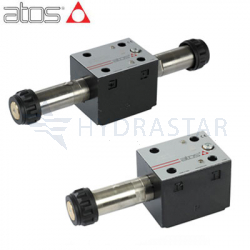Several different valves are used to control and regulate pressure in hydraulic systems. By understanding how these valves function, you can better troubleshoot problems and make informed decisions about system upgrades and modifications. Let’s take a closer look at the different types of valves and explain how they work.
Pressure Relief Valve
The pressure relief valve is used to protect a hydraulic system against overpressure. Depending on the application, the valve can be controlled by a pressure switch or by manually adjusting the setpoint limit. If the pressure exceeds this limit, the valve will open and release the fluid to whatever system/tank it is attached to.
In addition, this valve may allow a small amount of fluid (called “bleed-off”) to leave the system and return any fluid still trapped inside the hydraulic pump.
Unloading Valve
The unloading valve allows fluid to flow from the pump head into the actuator. It is typically used with a cylinder and can be installed at any point in a hydraulic circuit. If the pressure builds up on one side of the piston, a relief port opens and relieves some of the pressure. This allows for a controlled load reduction or extensions within a given range.
Counterbalance Valve
The counterbalance valve is used to balance loads. It is typically not adjustable but rather pre-set for specific applications. It serves as a non-leaking check valve that prevents pressure from one actuator from feeding back into the system. After the cylinder has opened, fluid can flow between chambers until equilibrium is reached. If the user requires an additional load, this valve allows extra pressure to be applied without putting excess stress on the pump or excessive wear and tear on components.
Sequence Valve
The sequence valve helps control the order in which hydraulic circuit elements are pressurised. It is typically used on the return line of a circuit. The flow of fluid pressing against the spool determines whether fluid flows through or returns to the tank until equilibrium is reached, at which time both chambers will be pressurised equally. In this way, the sequence valve can precisely control the pressure and flow in a circuit.
Pressure Reducing Valve
The pressure reducing valve serves as a safety switch in hydraulic circuits. It allows you to reduce operating pressures between the main line and branch line by opening when the system reaches a pre-set pressure. This helps prevent damage to components and provide for increased precision in circuit control.
Specifying The Right Valves For Your Application
The type of valve you need depends on the function of your system. At Hydrastar, we supply parts for hydraulic and pneumatic systems and offer design support for a wide range of hydraulic applications. We can help you determine which valve best suits your needs and provide you with the highest quality parts to suit your budget, timescale, and operating parameters. Please call 01353 721 704 to find out more.



